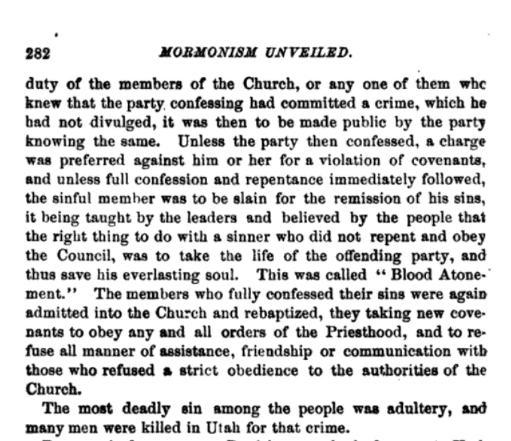Lee discusses the procedure for determining if blood atonement was necessary.
- Type
- Book
- Hearsay
- Direct
- Reference
Lee, John D. Mormonism unveiled; or, The life and confessions of the late Mormon bishop, John D. Lee (St. Louis: Bryan, Brand & Co., 1877), 282
- Scribe/Publisher
- Sun Publishing Company
- Audience
- General Public
- Transcription
Unless the party then confessed, a charge was preferred against him or her for a violation of covenants, and unless full confession and repentance immediately followed, the sinful member was to be slain for the remission of his sins, it being taught by the leaders and believed by the people that the right thing to do with a sinner who did not repent and obey the Council was to take the life of the offending party, and thus save his everlasting soul. This was called "Blood Atonement." The members who fully confessed their sins were again admitted into the Church and rebaptized, they taking new covenants to obey any and all orders of the Priesthood, and to refused all manner of assistance, friendship or communication with those who refused a strict obedience to the authorities of the Church.
The most deadly sin among the people was adultery, and many men were killed in Utah for that crime.
- Citations in Mormonr Qnas
The B. H. Roberts Foundation is not owned by, operated by, or affiliated with the Church of Jesus Christ of Latter-day Saints.

